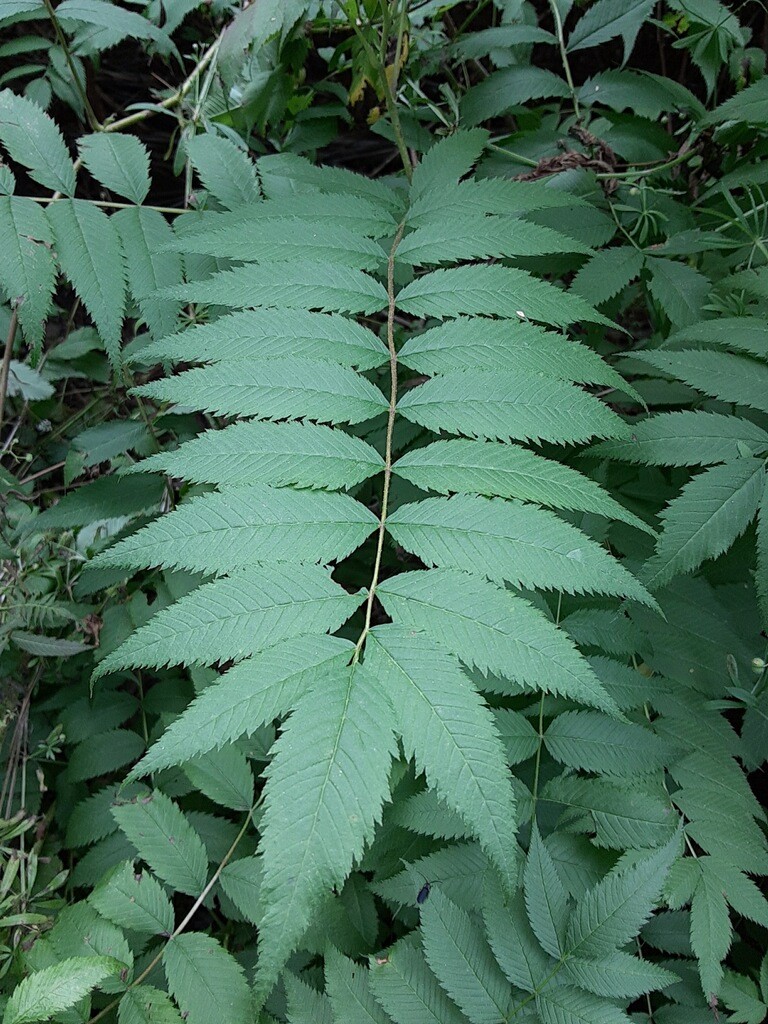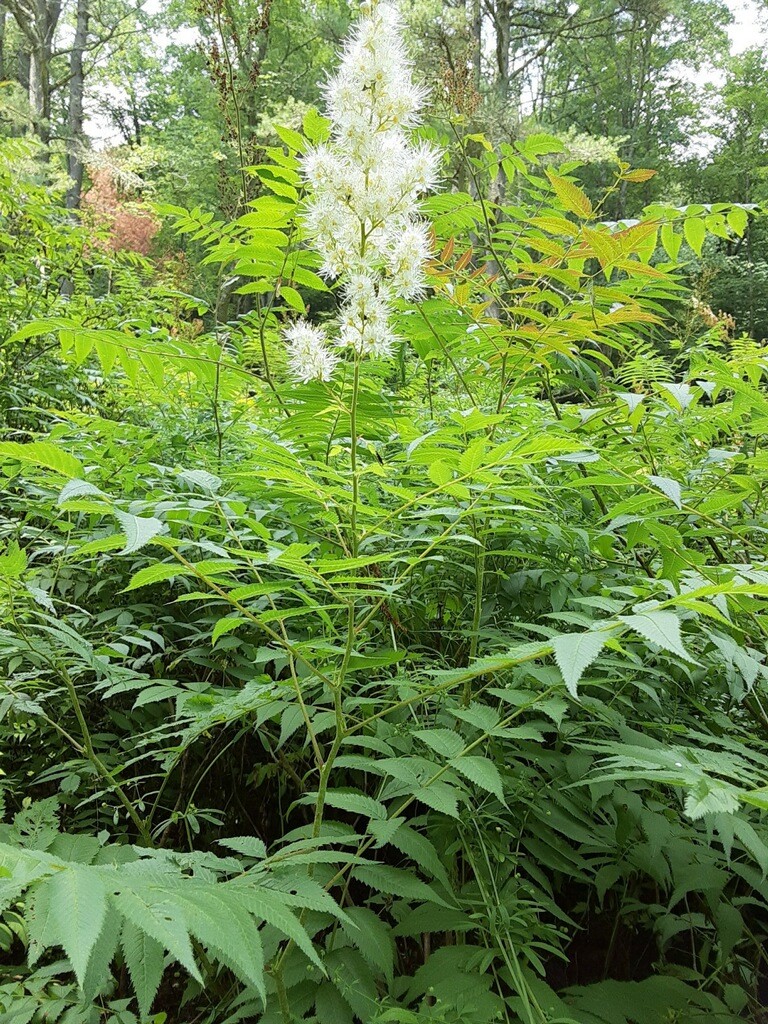By Susan Sprout
It is TRUE – this False Spiraea came to us from the Ural Mountains of West Central Russia, a particular range that marks part of the boundary between Europe and Asia.
It is TRUE that this plant is False Spiraea. True Spiraea plants have toothed single leaves up to two and one half inches long on their plant stems. False Spiraea has leaves that are at least a foot long, made up of thirteen to twenty-one toothed leaflets that each grow to four inches long.

It is TRUE that the leaves of False Spiraea are very similar to the long feather-shaped or pinnately compound leaves of American Mountain Ash, (Sorbus americanum), a native tree that can grow to thirty feet tall. Consequently, its scientific name, Sorbaria sorbifolium, means it has leaves like Sorbus. Both are members of the Rose Family.
It is TRUE that False Spiraea , a perennial growing to eight feet in height, can and does spread aggressively sideways in loose soil. This can be a positive quality because it helps control erosion on banks and slopes likely to get washed away. I found Ural False Spiraea on Dunwoody Road driving along Bear Creek. It has its work cut out for it, as this road has been washed out quite a few times! What caught my eye were the lovely four to ten inch tall, steeple-shaped clusters of tiny, white flowers. They form on the ends of new wood in early summer and leave dry, brown steeples when the blooming is finished.


